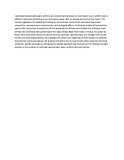| dc.contributor.author | Gichuki, Francis N | |
| dc.date.accessioned | 2015-02-26T11:32:06Z | |
| dc.date.available | 2015-02-26T11:32:06Z | |
| dc.date.issued | 2004 | |
| dc.identifier.citation | Water Resources Research Volume 40, Issue 8, August 2004 | en_US |
| dc.identifier.uri | http://onlinelibrary.wiley.com/doi/10.1029/2004WR003106/full | |
| dc.identifier.uri | http://hdl.handle.net/11295/80849 | |
| dc.description.abstract | Upstream-downstream water conflicts are common phenomenon in most basins. Such conflicts take a different dimension when they occur during dry season with an already low level of river flows. This context aggravates the spatial externalities on downstream communities and water-dependent ecosystems, causing serious socioeconomic and ecological effects. Utilizing an analytical framework to capture the causes and consequences of the spatial nature of these externalities and relying on both primary and secondary data pertaining to the Upper Ewaso Ngiro North basin in Kenya, this paper (1) shows how these externalities are caused more by upstream land and water use changes than by any climatic and hydrological factors, (2) evaluates the nature and magnitude of their impacts on different downstream community groups, (3) assesses the extent and success of past policy responses and local initiatives, and (4) concludes by indicating the needed approach and interventions for finding a durable solution to the problem of upstream-downstream water conflicts and externalities. | en_US |
| dc.language.iso | en | en_US |
| dc.publisher | University of Nairobi | en_US |
| dc.subject | river basin management; irrigation water management; agricultural production; water productivity; externalities; institutional arrangements | en_US |
| dc.title | Managing the externalities of declining dry season river flow: A case study from the Ewaso Ngiro North River Basin, Kenya | en_US |
| dc.type | Article | en_US |
| dc.type.material | en | en_US |

